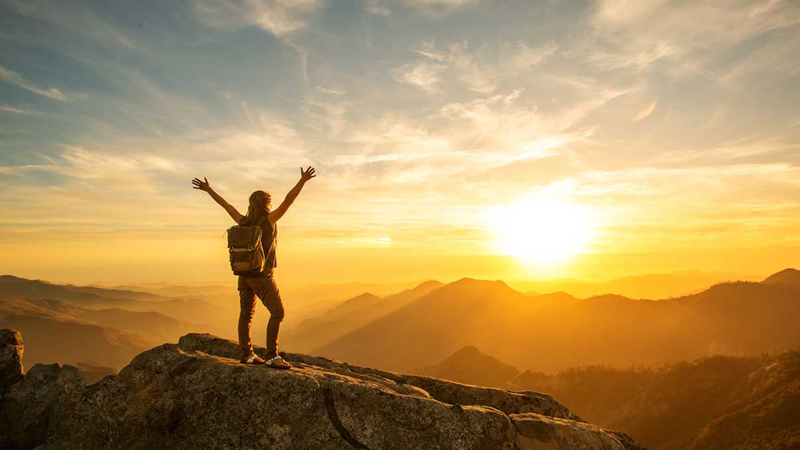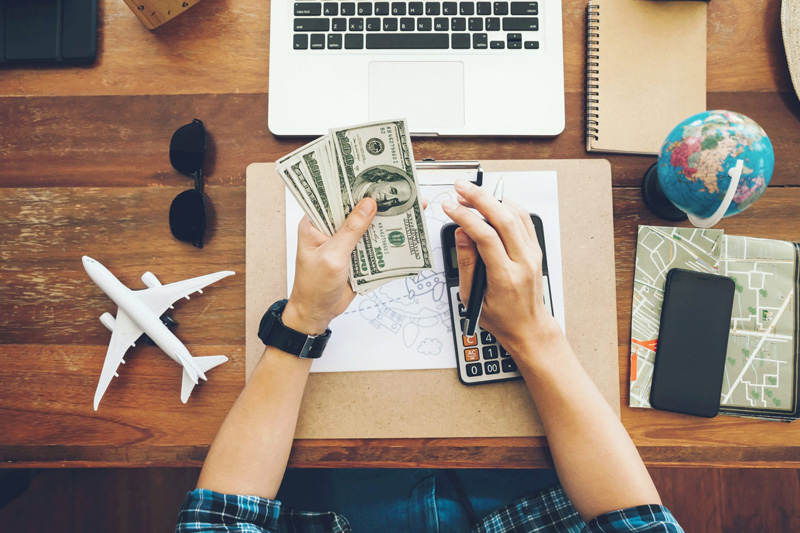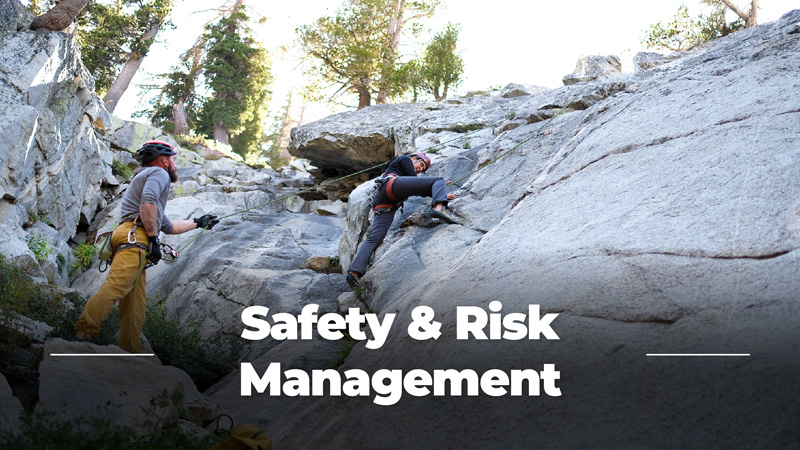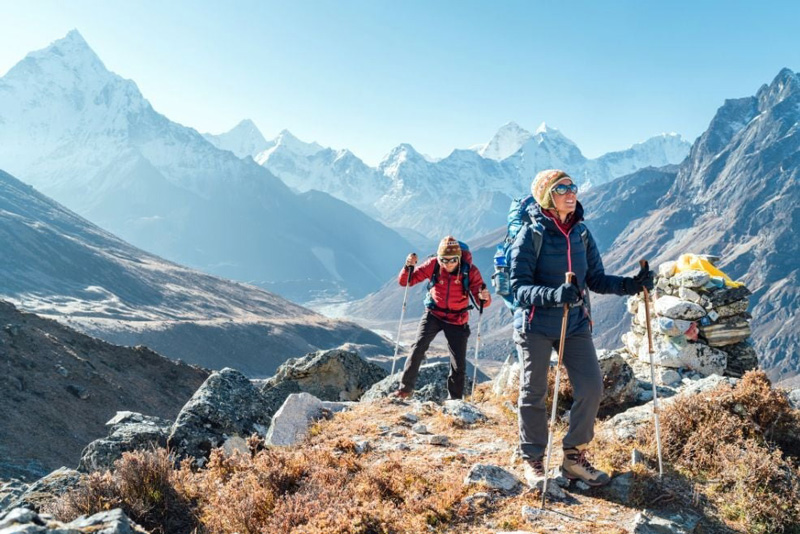Are you new to adventure travel? Welcome! You’ll never look back. But you’ll probably need some assistance getting started because budgeting and planning for an adventure trip isn’t second nature to you. So allow us to walk you through it step by step.
1. Choose a location
This is usually the simplest part of planning an adventure trip because you’ve seen images of a location you like the look of or a friend has told you about a location that piques your interest. You probably already know where you want to go and have wanted to go there for years!
The most important aspect of choosing a destination, in our opinion, is ensuring that it is somewhere you truly want to visit. Don’t go somewhere just because ‘everyone else’ has, or because you believe it’s a rite of passage.
Putting together an adventure trip takes some time, effort, and money. So make sure the location you choose excites you and will motivate you to complete the necessary paperwork ahead of time.
Choose somewhere that is really thrilling to you, no matter what anyone else is doing or thinks about it.
So, in terms of administration, once you’ve decided on your adventure travel destination, it’s time to do some research and start planning everything. The first thing we recommend is that you investigate the Covid-19 situation in the host country (or region)… yes, that nasty virus is still active and affecting lives and policies.

2. Research if travellers are welcomed and safe
It is critical to ensure your safety on your adventure trip. It goes without saying that some countries are safer than others for travellers. However, certain groups of people must exercise extra caution when selecting a location.
Female travellers should be aware that they are not equal in the eyes of the law in some countries, particularly in the Middle East. As a result, they are vulnerable because they have fewer rights. Women travelling alone, in particular, should exercise caution.
Furthermore, adventure travel frequently takes place in remote areas where certain gender roles are rigidly enforced. Will you be okay if attitudes towards women (and expectations of women) differ from what you’re used to?
Consider whether you’re willing to change your attire if social norms require it. While most of us are fine with taking our shoes off and covering our shoulders in religious and sacred spaces, are you okay if you are required to cover up more? You want to be a courteous traveller while not making yourself uncomfortable.
Attitude and behaviour towards LGBTQIA+ folks
Anyone who is a member of the LGBTQIA+ community must also consider whether they will be welcomed and safe in the desired location.
Certain countries (particularly those in Asia and Africa) do not accept people of all sexual orientations. This is also true in a legal sense. Consider whether you’d prefer to travel somewhere with more liberal views and policies.
Stability of the region
Also, consider how stable the destination country is right now. If you are not a news junkie, you may be unaware of certain issues. Please conduct some research to learn about any conflicts or other relevant issues that may have an impact on your travels.
You may also want to consider whether your visit benefits a tourism-promoting government that does not share your values or treats its citizens in an equitable manner.
Check to see if any natural disasters have rendered the area you want to visit temporarily (or permanently) impassable. However, once it’s safe to travel again, your visit could be a vital contributor to a struggling tourism industry’s recovery. Trips to Nepal, for example, are highly valued by the country’s tourism stakeholders, who suffered greatly in the aftermath of the 2015 earthquake.
What diplomatic ties are in place?
It’s also worth investigating whether your two countries have diplomatic ties. Do you have an embassy where you can go in an emergency?
Obviously, we’re not attempting to dictate who should and should not travel where. However, if you are new to adventure travel, please keep the points mentioned above in mind.
Finally, as we discussed in step #9, if you believe you are part of a demographic that may be vulnerable while travelling in a particular country or in general, you are often safer with an adventure tour operator.

3. Decide on your trip’s duration and activities
Before thinking about the budget, we think it’s a good idea to write down all the places and activities you want to do on an adventure trip. Similar to creative writing, have fun creating your dream itinerary and then do some editing. You’ll be able to see what you really want to do and see this way.
After you’ve made a list of desired activities and calculated the number of days required, it’s time to think about the budget (and possibly how many days of leave you can get). At this point, you should also engage in step #5, which is about costing everything. Because you’ll need to switch between your itinerary and your costs. As you learn about prices and fees, you’ll probably need to change (or add!) some things to your itinerary.
Try to strike a balance between saving money and planning the adventure trip you really want to take. You may only visit that special location once in your life, so make the most of it by seeing and doing the things that are important to you.

4. Make a budget
A budget that truly works for you necessitates a few steps, which are discussed below.
A. Find out what everything costs
A. Determine the total cost of everything.
This task can be time-consuming, but it’s worth doing it correctly the first time to avoid unpleasant surprises later on.
Here is a list of ‘big ticket’ items to price research and then use to create your budget:
- Airfares (make certain that the prices include airport taxes)
- A new or renewed passport (as mentioned in step 7)
- Local transport (everything from airport transfers to trains and buses)
- Accommodation (check to see if airport transfers and possibly other local travel are included)
- Food and beverages (depending on your location, you may need to purchase drinking water)
- Insurance for travel (see step 14)
- Any national park and similar permits and fees, which can be expensive at times (see step #13)
- Any required equipment and clothing (see steps 15 and 16)
- A tour operator fee (some adventure trips, such as climbing Kilimanjaro, require the use of a tour operator).
- A tour guide, driver, porter, and so on (again, these may be required).
Here now is a list of more inexpensive items to consider, some of which may or may not apply to you and your trip:
- A visa or visas (if visiting Bhutan this would actually be a major expense)
- Service tips (confirm whether this is customary for your type of adventure trip)
- A power bank and an international adapter (see step #17)
- Covid-19 examinations (see step #19)
- Any vaccinations or other medications, such as anti-malaria tablets (see step 6).
- Souvenirs and gifts (see below for more information)
B. Refine your itinerary if necessary
As we discussed in step 4, you can refine your itinerary once you know how much everything costs. Then, once you’ve decided on a final itinerary, you may or may not need to set aside some time to save…
C. Make a savings plan if necessary
Many adventure travellers are not wealthy individuals who simply point to a map and then flash a credit card. They are frequently people who prioritise travel over other possible expenditures.
If you really want to go on an adventure and need to save, create a savings plan that you can start working on right away. Consider whether there are any nice-to-haves you can give up, even if only for this year, in order to make your dream a reality.
At the same time, if you realise your savings plan is too strenuous and will only cause you stress, reconsider your itinerary or possibly postpone the trip’s planned date.
D. Consider what initial costs and deposits are needed
In some ways, an adventure trip necessitates two budgets. This is due to the fact that certain deposits are usually required early on. You may also want to book your flights ahead of time (though this is becoming less common as a result of the pandemic’s uncertainty). The remainder of the adventure trip’s expenses are frequently only payable at the time of the trip.
So, we recommend that you figure out how much you need upfront (or earlier) and how much you only need by the trip date.

5. Research health risks and requirements
You must now determine whether the destination has any health-related requirements for entry. Many East African countries, for example, will not let you in unless you have proof of a yellow fever vaccine. Many countries now require proof of a Covid-19 vaccine before admitting you.
You should also find out if there are any precautions you should take, such as anti-malaria medication. Some high-altitude trekkers prefer to take a medication like Diamox to reduce the possibility of side effects.
In terms of malaria, you should choose accommodation (discussed in point #12) that includes bed netting. You should also bring anti-mozzie spray or lotion. Long trousers and sleeves will also keep you safe from being bitten.
Finally, in relation to our discussion in point #13, you should purchase travel insurance that covers you for the specific activity you’re participating in. For example, high-altitude trekkers should buy insurance that covers them up to a certain altitude. Some countries will not even allow you to trek if you do not have such insurance.
Plan a small first aid kit
We also recommend that you bring a small first-aid kit with you. If you travel with a tour operator, they should have a kit, but having your own is still a good idea. You can’t guarantee that a tour operator will have everything you want or need.
Some items we recommend you put into your personal first aid kit are:
- Antiseptic
- A sterilised cotton wool pad
- Plasters (band aids)
- A small bandage
- Anti-diarrhoea medications
- Anti-constipation medication
- Anti-nausea medication
- Hay fever medication
6. Decide if you want to travel alone or with others
Now is the time to confirm any friends or family members who wish to accompany you. Remember that not everyone you get along with will be your ideal travel companion. It’s worth double-checking that any fellow travellers truly believe in the itinerary you’ve planned.
Another option is to fly away on your own. Solo travel is no longer considered a last resort. Many people prefer to travel alone for a variety of reasons. We urge you not to put off adventure travel if you have no one to accompany you. Go out on your own and enjoy your independence and wonderful company!
Alternatively, use social media to put out feelers to see if anyone you know would like to join you. Many people prefer to ride on an already moving train rather than start something from scratch.
Another possibility is to join a group of strangers. Adventure travel groups are frequently made up of strangers who become friends during the trip!

7. Purchase any necessary permits
Much adventure travel takes place in national parks, reserves, and the like, and entry permits are frequently required. This is an important part of your budget because permits are often expensive, with a daily fee.
Other charges and fees are also imposed by some countries and regions. As we discuss in Nepal trekking permits and fees (2023), you must pay park fees but also a government permit if you want to trek in Nepal, and you may be required to pay local municipal fees when entering an area. These expenses add up and constitute a significant portion of your budget.
If you travel with a tour operator, make sure that these fees are included in the package price (they usually are) and that the operator will obtain them on your behalf. A good tour operator will take care of this for you!
If you’re organising your own permits, make sure you know which ones must be obtained ahead of time and which can be purchased on the spot.

8. Look into what equipment you need
Adventure travel frequently necessitates the use of specialised equipment such as tents, outdoor cooking equipment, kayaks, snorkels and flippers, emergency oxygen, and so on.
It’s especially important if you’re travelling on your own (rather than with a tour operator) to research and acquire the necessary equipment. When you travel with a tour operator, they usually provide the majority of the necessary equipment, which is a huge help. If they do not provide you with a list of the equipment that is and is not included in your package, be sure to request one.
Decide if you want to rent or buy
You can frequently rent equipment at locations known for a specific type of adventure activity. We’re talking about things like sleeping bags and trekking poles.
For three reasons, renting is a viable option to consider…
- For starters, local rental shops are familiar with the equipment needed to participate in the region’s signature activity safely and comfortably. As long as you don’t go to a shady basement shop that’s trying to offer a ridiculous bargain, you should be able to find knowledgeable salespeople who can explain and point you in the right direction for your specific adventure.
- Secondly, renting is a great option for expensive items that you’re unsure you’ll use again. If you’re camping in a cold climate for the first time, for instance, you don’t necessarily want to buy your own four-season sleeping bag. You want to first see how much you enjoy the experience before considering making such a big purchase!
- Thirdly, renting means you don’t need to transport certain items (which are often heavy and bulky) across the globe. Even if you have a piece of equipment at home, you might opt to rent it at the location.
Of course, before considering this option, conduct thorough research into the rental situation in your destination! Also, allow enough time for any rental arrangements; you don’t want to rush important equipment decisions.
Follow Alice provides all of the necessary equipment for our clients’ adventures, from tents and camp chairs to sleeping bags and sleeping mats.

9. Research if you need any special clothing
You may require special clothing that you do not already have depending on your destination and activities. Snow boots, hiking boots, a winter jacket, and thermal underwear come to mind.
Make a thorough investigation into what clothing and shoes are required for your type of adventure trip. Also, try to buy certain items ahead of time so you have time to test them out (and wear them in) if necessary. What appears to be a fantastic idea in theory may turn out to be a nightmare of discomfort or inadequacy in practice.

10. Check your gadgets’ plugs are compatible
Here are some things to look into and research regarding your tech gadgets:
- Before bringing heavy equipment that you won’t be able to charge, make sure there will be plug points along your adventure route. Alternatively, bring a power bank with you.
- Investigate the plug points available in the destination country to ensure that your items can be plugged in there. If not, you will need to purchase an adapter.
- Check that the batteries in your equipment still have some charge. Then pack extras. Always bring extras.
Check with your adventure destination to see if drones are permitted.










